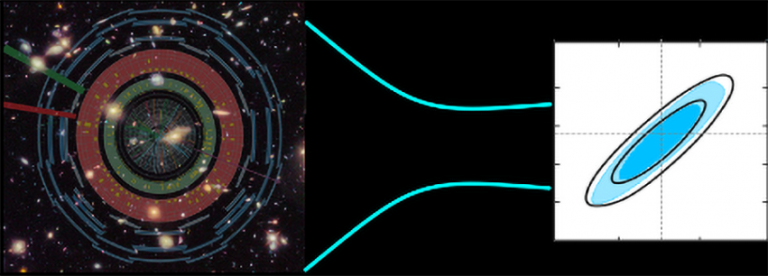Primary supervisors: Andreas Korn and Benjamin Joachimi

Making use of established techniques from one realm in another has often led to major advances in science. Examples in particle physics include the use of solid-state theory leading to the Higgs mechanism, or the wider acceptance of Bayesian techniques, commonly employed in astrophysics in high energy physics (HEP). This project will employ simulation-based inference widely used in HEP to analyse data from large scale cosmological surveys. Cosmological parameters are derived from survey images using a likelihood that models the distribution and shapes of the observed galaxies. Any observational distortions are modelled in the likelihood. Inference in high energy physics via such an explicit likelihood is extremely difficult. Elementary particles can't be observed directly so modelling detector effects is crucial. This has led to the widely accepted GEANT tool kit for detector simulations. Inference in HEP uses simulation templates usually reconstructed in the same manner as real collision data. With new high statistics cosmological surveys coming online many effects cannot be modelled any more directly in the likelihood with the required precision. As detailed telescope simulations exist, employing simulation-based inference might provide a solution. This leads however to another problem, as such detailed simulation is often to slow to generate the required sample size. A problem very familiar to particle physicists who need matching simulation statistics for collision rates of 40 million per second. New machine learning methods based on generative adversarial networks have provided a viable solution. The project will explore the feasibility of a cosmological inference chain using templates of fully simulated images. The project will explore the feasibility of a cosmological inference chain using templates of fully simulated images.
For more information contact Andreas Korn (HEP) and Benjamin Joachimi (Astro)
 Close
Close

